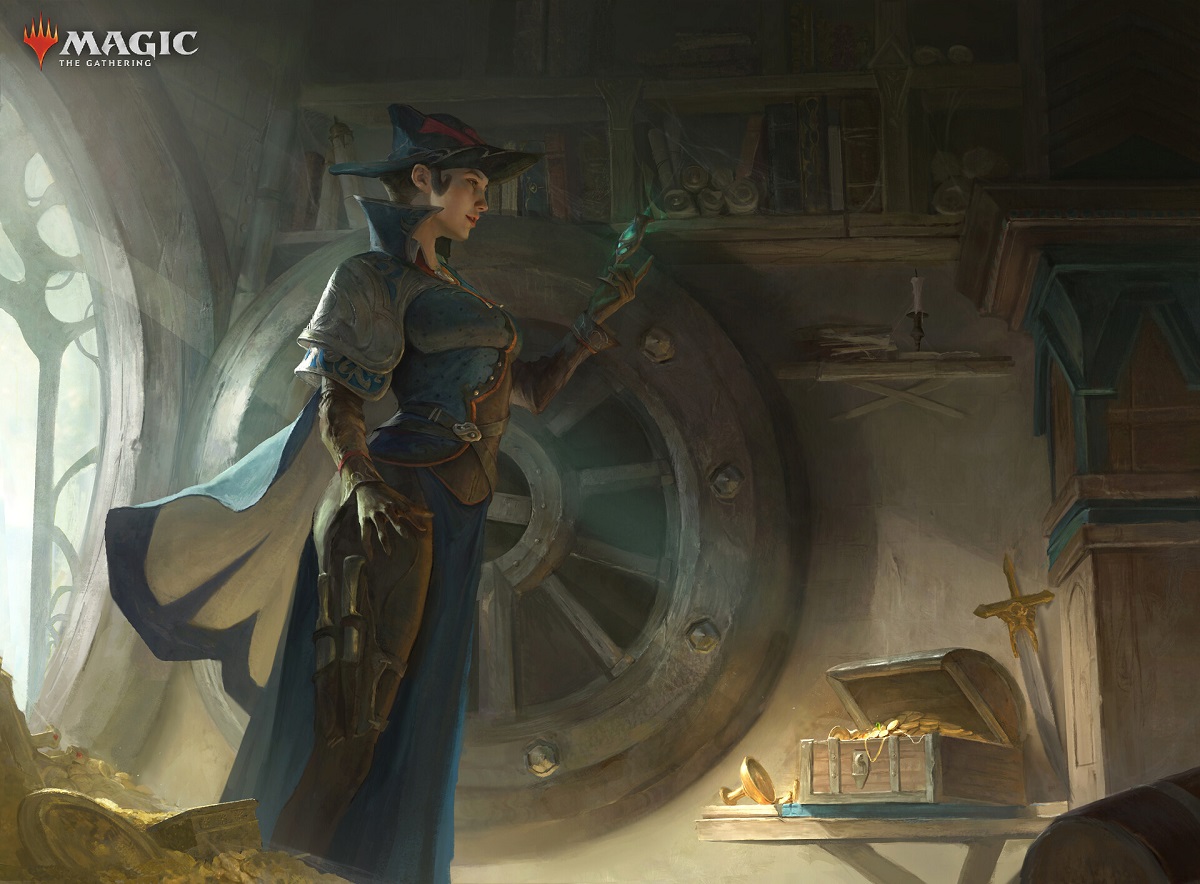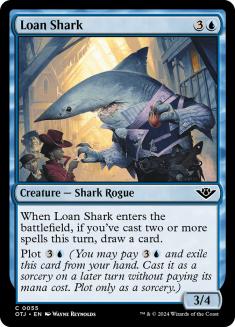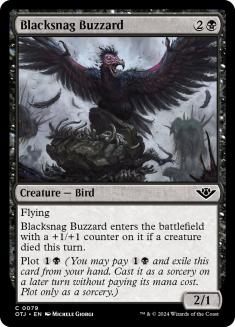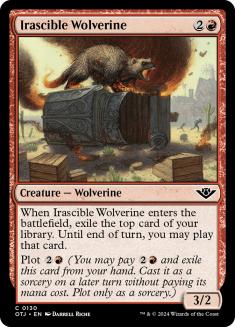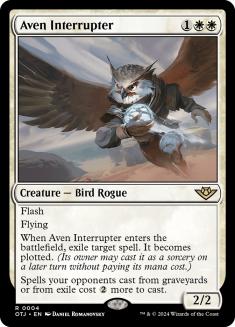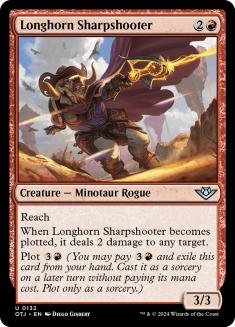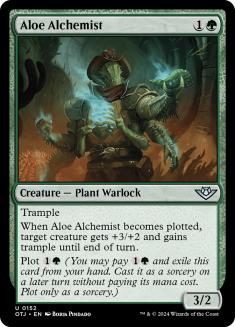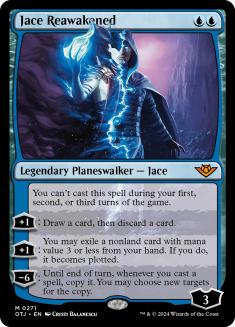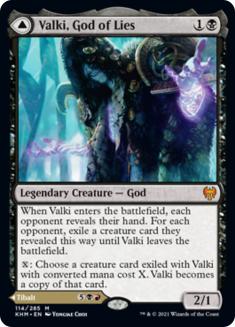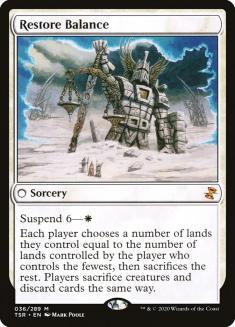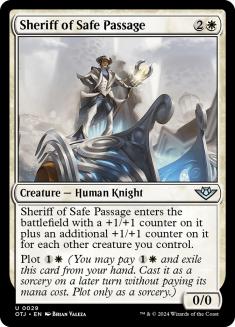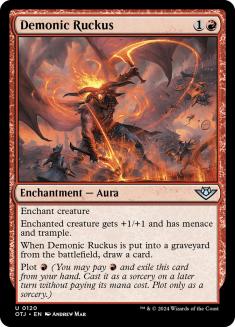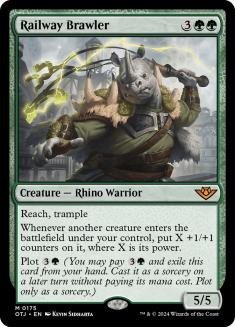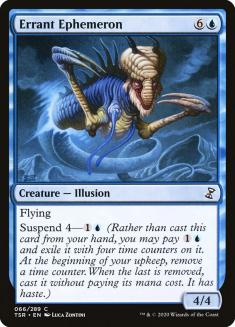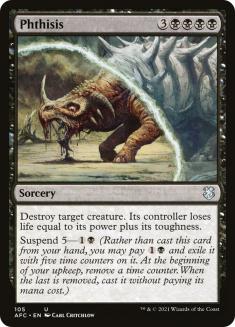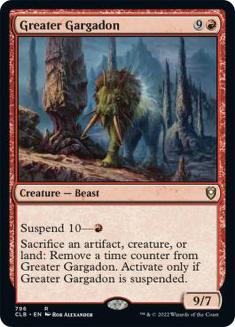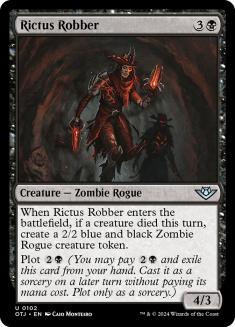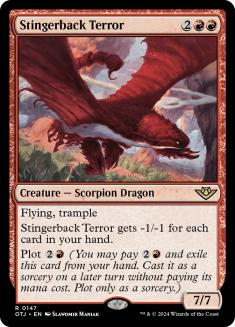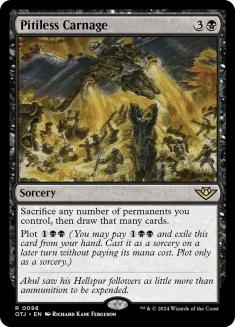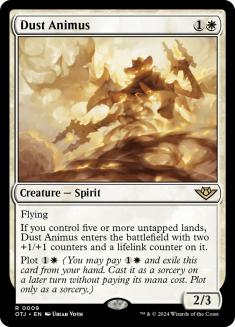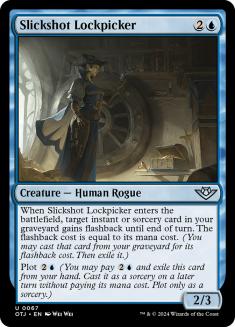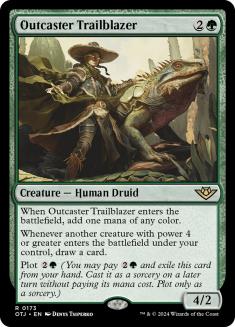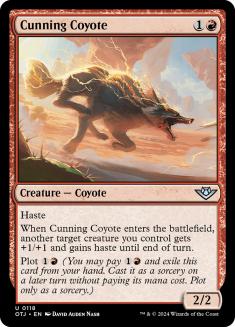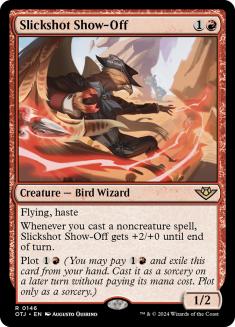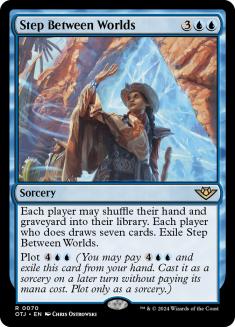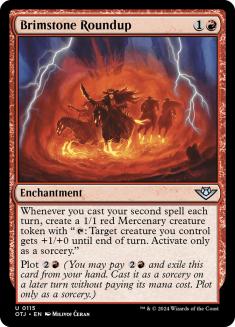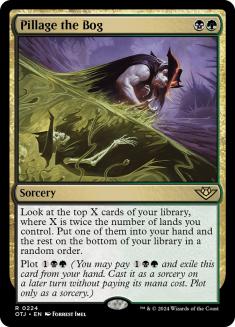Howdy, gamers! With the release of Outlaws of Thunder Junction looming, it’s time to start talking about the new cards! We already have access to the full card preview at this time, but I’m going to let that marinate for a little before I publish my Top 10 Cubeable cards list. Instead, this week I would like to focus on a new mechanic, plot, and how to approach cards with plot for competitive and casual Magic alike!
Once upon a time, Magic sets were released in blocks and mechanics would be iterated over the course of two or three sets, but these days, with everything coming out on a one-set basis, we see a lot more variation in new mechanics upon release. Plot is a great example of a mechanic releasing with a lot of varied executions in terms of design and, by extension, play patterns. Before we dig too deeply into that, let’s take a look at the mechanic more broadly.
What Is Plot?
Plot is a mechanic in all five colors that puts a card into exile and then allows its owner to cast it without paying its mana cost on a future turn. There are a whopping 38 cards in Outlaws of Thunder Junction that have or reference plot, with most of them having a cost that the owner can pay to plot the card from their hand, a few options to plot some of your other cards, and, in the case of Aven Interrupter, a way to plot opposing cards as a tempo swing.
A surface-level explanation is that plot is a way to pay a cost this turn to cast a spell on a later turn. Paying the plot cost on a card counts as a special game action, and therefore you cannot respond to a player paying one, though you can of course respond to the actual casting on the later turn.
What I find interesting regarding the different executions in Outlaws of Thunder Junction alone is that we see cards that are cheaper to plot than to just cast from your hand, cards with the cost to plot as to cast normally, and cards that cost more mana to plot. There’s still room for off-color or non-mana plot costs in future sets, but in its first set, we also already see a couple of cards that trigger some ability when plotted!
Plot Risks and Rewards
Plotting cards comes with some inherent risk given that you’re spending mana for no immediate benefit, but an ability that triggers when you plot something is a great way to push cards with the mechanic. This is not to say that Longhorn Sharpshooter is at all pushed, just something that I’m thinking about regarding future implementations of the mechanic.
Jace Reawakened is getting buzz, largely for its ability to cast a Tibalt, Cosmic Impostor when you plot a Valki, God of Lies. I imagine that we’ll be seeing that show up in Pioneer and Modern in some capacity, and seeing Jace plotting some Restore Balances and the like in Modern wouldn’t shock me, either. That’s all very exciting, but in today’s article, I’ll be focusing on pure applications of the mechanic.
We’re left to wonder if this level of variation means that Wizards of the Coast (WotC) wanted to give us a range of demonstrations of how plot can be implemented knowing that it’s not a mechanic that they’ll get a lot of mileage out of otherwise, or if they just couldn’t help themselves because the mechanic is so delightful to play with. I imagine that how the cards are received will play a major role in the future of plot!
Regarding that, I see how the plot cost compares to the casting cost of a card as a significant factor in how these cards play and should be played. Let’s break things down in terms of how these relative costs, so as to really dig into what plot has to offer.
Cards That Are Cheaper to Plot
I think that cards that are cheaper to plot than to cast normally are the most approachable designs when first trying to understand the mechanic. It’s pretty intuitive to pay a cheaper cost to get a little more than your mana’s worth later. Designs in this space are most reminiscent of suspend, where it’s very transparent that you’re paying some tempo as part of the cost of the spell.
Cards in this category offer a natural play pattern of just plotting the cards if you have extra mana to do so on a given turn, or casting them as normal on turns when you can otherwise afford to do so. A lot of these designs also offer abilities that are easier to take advantage of on later turns if you don’t have to spend mana on the spell that turn, or are just higher-impact cards later. Rictus Robber’s ability will be easier to leverage if you have all of your mana available for a kill spell, and there will be times that you’ll want to plot Stingerback Terror simply because you have too many cards in hand.
Pitiless Carnage is among the more interesting cards that are cheaper to plot than to cast, largely because this shape of the card encourages you to play it in the way where it will be most powerful in practice. Tapping out to sacrifice a bunch of permanents to draw cards is pretty weak. But getting to tap all of your lands and then sacrifice them for free is kind of appealing! I don’t have any intentions of Cubing with the card myself, but it is exciting to think about using it to set up a Storm win, and much less exciting thinking about using it to set up a Balance.
I would expect that, had plot been introduced during the old block structure, this would be the only implementation of the mechanic in the first set and there wouldn’t be all that much for us to chew on besides a little arithmetic. Luckily for us, we’re getting a much wider range of options today! The second category really opens up the strategic implications of plot.
Cards With Plot Costs Equal to Their Casting Costs
Cards wtih plot costs equal to their casting cost offer a more interesting puzzle. Why would you want to pay the plot cost and cast the spell later instead of just casting the spell now if the costs are the same? Cards like Dust Animus and Outcaster Trailblazer offer clues in their other abilities. Dust Animus makes it worth your while to wait until you control five lands to actually cast it, with plot giving you the ability to pay that cost in advance, and the Outcaster Trailblazer’s mana-generating ability is potentially more useful when cast for free on a future turn. You’ll also be more likely to immediately convert on Outcaster Trailblazer’s triggered ability to draw cards by plotting it and having more access to mana to immediately cast a large creature on a future turn.
Slickshot Lockpicker also offers some incentive to plot it over casting it, in that plotting it means that you’ll have more mana to flashback a bigger spell. Three mana is a lot to spend not immediately impacting the battlefield, but a 2/3 body isn’t nothing, and just using the card to cast something cheap like a Ponder or a Lightning Bolt is still pretty strong. The card is very likely to show up in a lot of Peasant Cubes.
Casting a plotted creature does not grant the creature haste, which is a stark contract to suspend. This is interesting to me, as the reason that suspend creatures gain haste is that playtesting revealed that players tended to assume this was the case anyway. Given the precedent set by suspend, it is curious that plot creatures don’t gain haste, but this does make the plot creatures that do have haste much more intriguing.
Cunning Coyote’s ability to grant haste to another creature when it enters the battlefield gives good reason to plot it and save that ability to grant haste to a larger creature on a future turn. Slickshot Show-Off offers no such obvious payoff for waiting, but it’s worth investigating because I believe Slickshot Show-Off to be among the most promising cards for multiple Constructed formats in Outlaws of Thunder Junction, and an exciting update for my Tempo Twobert.
Red agressive decks have seen some success in Standard lately, and a flying creature with haste that grows when you cast pump spells seems strong in a format where Giant Growth has proven playable. On that note, pump and other forms of protection spells are among the most significant reasons to plot a Slickshot Show-Off.
Aggressive decks that play pump spells tend to operate on few lands, so it can be difficult to cast a threat and leave up much interaction on the same turn. Plotting a threat and then deploying it with all of your mana up is an incredibly powerful option for these decks when they expect opponents to be long on interaction. I fully expect Slickshot Show-Off to show up in Pioneer in something resembling the Boros Heroic deck that Simon Nielsen recently used to make the finals of Pro Tour Chicago.
Creatures (16)
Lands (18)
Spells (26)

I also intend to experiment with the card in Modern Prowess. Kiln Fiend has been disappointing in every way when I’ve tried it in the past, but a small dip in the amount that spells pump it in exchange for flying and haste is a significant upgrade. Pumping on Mishra’s Bauble and not just instants and sorceries is a big deal, too, and plotting will also come up in Modern some of the time just to tax your opponent’s mana more when you expect that they have a Fatal Push or Lightning Bolt at the ready. Plotting and then deploying two more more haste threats on the same turn down the road is a potent way to overload opposing mana and/or removal.
Cards That Are More Expensive to Plot
And finally, we come to cards that are more expensive to plot than to cast normally. These cards tend to offer transparent reasons of why they’re more expensive to plot, with Step Between Worlds being the loudest example of this. Spending five mana to give each player the option of a draw-seven at sorcery speed means that your opponent will get the first crack at actually casting the cards, but spending six mana for the opportunity to leverage the cards drawn first is much more powerful if you can afford to take a turn off. I don’t think that Step Between Worlds ranks as compared to existing draw-sevens for a powered Cube, but it is a potentially exciting option for slightly lower-power environments.
Pillage the Bog is one of the cooler implementations of plot, with controlling more lands and by extension getting more selection from the card being an appealing reason to plot it. Three mana is a lot to pay for an Impulse-style effect, but as the game goes on, the selection that the card offers is powerful. I imagine that the plot cost is higher than the casting cost on this one largely because if they were the same, you would plot the card almost every time! That would be a pretty reasonable thing to do on most Turn 2s, but is a much bigger ask on Turn 3, which is where higher plot costs prove to be detrimental the further behind you are on the battlefield.
Plot is a cool mechanic that offers a lot of appealing designs for Cube and Constructed alike in Outlaws of Thunder Junction. Many variations on how to implement the mechanic are already on display in the set, and I already find myself hopeful that we’ll see the mechanic return in the future and explored further. I see it as a higher-agency form of suspend with wider design space, and I find the considerations that players will have to make when choosing whether to plot or just cast a card compelling.

